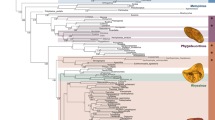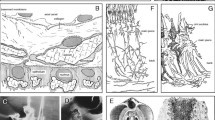Abstract
Computed tomography (CT) methods were applied to a problematic fossil spider (Arachnida: Araneae) from the historical Berendt collection of Eocene (ca. 44–49 Ma) Baltic amber. The original specimens of Ocypete crassipes Koch and Berendt 1854 are in dark, oxidised amber and the published descriptions lack detail. Despite this, they were subsequently assigned to the living Pantropical genus Heteropoda Latreille, 1804 and are ostensibly the oldest records of huntsman spiders (Sparassidae) in general. Given their normally large size, and presumptive ability to free themselves more easily from resin, it would be surprising to find a sparassid in amber and traditional (optical) methods of study would likely have left O. crassipes as an equivocal record—probably a nomen dubium. However, phase contrast enhanced X-ray CT revealed exquisite morphological detail and thus ‘saved’ this historical name by revealing characters which confirm that it's a bona fide member both of Sparassidae and the subfamily Eusparassinae. We demonstrate here that CT studies facilitate taxonomic equivalence even between recent spiders and unpromising fossils described in older monographs. In our case, fine structural details such as eye arrangement, cheliceral dentition, and leg characters like a trilobate membrane, spination and claws, allow a precise referral of this fossil to an extant genus as Eusparassus crassipes (Koch and Berendt 1854) comb. nov.



Similar content being viewed by others
References
Berendt GC (1845) Die im Bernstein befindlichen organischen Reste der Vorwelt, gesammelt, in Verbindung mit Mehren bearbeitet und herausgegeben. N Jb Min Geog Geol Petrefaktknd 1845:864–879
Bonnet P (1958) Bibliographia Araneorum. Tome II (4me partie N–S). Douladoure, Toulouse, pp 3027–4230
Bosselaers J, Dierick M, Cnudde V, Masschaele B, Vlassenbroeck J, van Hoorebeke L, Jacobs P (2010) High-resolution X ray computed tomography of an extant new Donuea (Araneae: Liocranidae) species in Madagascan copal. Zootaxa 2427:25–35
Dabert M, Witalinski W, Kazmierski A, Olszanowski Z, Dabert J (2010) Molecular phylogeny of acariform mites (Acari, Arachnida): strong conflict between phylogenetic signal and long-branch attraction artifacts. Mol Phylogenet Evol 56:222–241
Dunlop JA, Penney D, Tetlie OE, Anderson LI (2008) How many species of fossil arachnids are there? J Arachnol 36:267–272
Dunlop JA, Penney D, Jekel D (2011) A summary list of fossil spiders and their relatives. In: Platnick, NI (ed) The world spider catalog, version 11.5. American Museum of Natural History. Available at http://research.amnh.org/iz/spiders/catalog. doi:10.5531/db.iz.0001
Giebel CG (1856) Die Insekten und Spinnen der Vorwelt mit steter Berücksichtigung der lebenden Insekten und Spinnen; monographisch dargestellt. Leipzig, p 511
Giribet G, Vogt L, Pérez González A, Sharma P, Kury AB (2009) A multilocus approach to harvestman (Arachnida: Opiliones) phylogeny with emphasis on biogeography and the systematics of Laniatores. Cladistics 25:1–30
Heethoff M, Helfen L, Norton RA (2009) Description of Neoliodes dominics n. sp. (Acari, Oribatida) from Dominican amber, aided by synchrotron X-ray microtomography. J Paleontol 83:153–159
Henderickx H, Cnudde V, Masschaele B, Dierick M, Vlassenbroeck J, van Hoorebeke L (2006) Description of a new fossil Pseudogarypus (Pseudoscorpiones: Pseudogarypidae) with the use of X-ray micro CT to penetrate opaque amber. Zootaxa 1623:47–53
Hoffeins C (2008) Animal and plant inclusions in the collection of Otto Helm (1826–1902), Gdańsk. Bursztyinsko 31:36–43
Hong Y-c (1985) Fossil insects, scorpionids and araneids in the diatoms of Shanwang. Geological Publishing House, Beijing, p 80
Jäger P (1998) First results of a taxonomic revision of the SE Asian Sparassidae (Araneae). pp 53–59. In: Selden PA (ed) Proceedings of the 17th European Colloquium of Arachnology, Edinburgh, 1997. p 350. British Arach. Soc., Burnham Beeches, Bucks
Jäger P (1999) Sparassidae—the valid scientific name for the huntsman spider (Arachnida: Araneae). Arachnol Mitt 17:1–10
Jäger P (2001) Diversität der Riesenkrabbenspinnen im Himalaya – die Radiation zweier Gattungen in den Schneetropen (Araneae: Sparassidae: Heteropodinae). Cour Forsch-Inst Senckenberg 232:1–136
Jäger P (2002) Heteropodinae: transfers and synonymies (Arachnida: Araneae: Sparassidae). Acta Arachnol 51:33–61
Jäger P (2004) A study of the character ‘palpal claw’ in the spider subfamily Heteropodinae (Araneae: Sparassidae). pp 107–125.In: Logunov DV, Penney D (eds) Proceedings of the 21st European Colloquium of Arachnology, St.-Petersburg, 4–9 August 2003. p 374. KMK Scientific Press, Moscow
Jäger P (2008) Revision of the huntsman spider genus Heteropoda Latreille 1804: species with exceptional male palpal conformations (Araneae: Sparassidae: Heteropodinae). Senckenberg biol 88:239–310
Jäger P, Kunz D (2005) An illustrated key to genera of African huntsman spiders (Araneae: Sparassidae). Senckenberg biol 85:163–213
Jäger P, Ono H (2000) Sparassidae of Japan. I. New species of Olios, Heteropoda and Sinopoda with remarks on known species (Arachnida: Araneae). Acta Arachnol 49:41–60
Jäger P, Otto S (2007) New records of Olios sericeus (Kroneberg 1875) with notes on its taxonomy and biogeography (Araneae: Sparassidae: Sparassinae). Rev Ibér Arachnol 14:19–24
Jäger P, Rheims CA, Labarque FM (2009) On the genera Sparianthina Banks 1929 and Anaptomecus Simon 1903 from South and Central America (Araneae: Sparassidae). Zookeys 16:115–147
Keilbach R (1982) Bibliographie und Liste der Arten tierische Einschlüsse in fossilen Harzen sowie ihrer Aufbewahrungsorte. Teil 1 Dt Ent Z (NF) 29:129–286
Koch CL, Berendt GC (1854) Die im Bernstein befindlichen Crustaceen, Myriapoden, Arachniden und Apteren der Vorwelt. In: Berendt GC (ed) Die im Bernstein befindlichen organischen Reste der Vorwelt, vol 1, part II. Nicholai, Berlin, p i–iv + 1–124
Lin Q-b, Zhang Z-f, Wang B-z (1989) New evidences for Miocene climatic optimum event—review on the Miocene spider fossils from Shanwang collection. Proceedings of International Symposium on Pacific Neogene and Marine Events. Nanjing University Press, pp 137–147
McNeil A, Bradley RS, Withers PJ, Penney D (2010) Developments in X-ray tomography VII In: Stock SR (ed) Proc. SPIE, San Diego, vol 7804, pp 78041Q-1
Menge A (1854) Footnotes. In: Koch CL, Berendt GC Die im Bernstein befindlichen Crustaceen, Myriapoden, Arachniden und Apteren der Vorwelt. In: Berendt GC (ed) Die im Bernstein befindlichen organischen Reste der Vorwelt. Vol. 1, part II. Nicholai, Berlin, p i–iv + 1–124
Penney D (2010a) The evolution of jumping spiders (Araneae: Salticidae): the palaeontological evidence. Peckhamia 81(1):1–3
Penney D (ed) (2010b) Biodiversity of fossils in amber from the major world deposits. Siri Scientific Press, Manchester, p 304
Penney D, Selden PA (2011) Fossil spiders: the evolutionary history of a mega-diverse order. Monograph Series, vol 1. Siri Scientific Press, Manchester, p 128
Penney D, Dierick M, Cnudde V, Masschaele B, Vlassenbroeck J, van Hoorebeke L, Jacobs P (2007) First fossil Micropholcommatidae (Araneae), imaged in Eocene Paris amber using X-Ray computed tomography. Zootaxa 1623:47–53
Penney D, Green DI, McNeil A, Bradley R, Marusik YM, Withers PJ, Preziosi RF (2011) A new species of anapid spider (Arthropoda: Araneae, Anapidae) in Eocene Baltic amber, imaged using X-ray computed tomography. Zootaxa 2742:61–68
Petrunkevitch AI (1942) A study of amber spiders. Trans Conn Acad Arts Sci 34:119–464
Petrunkevitch AI (1958) Amber spiders in European collections. Trans Conn Acad Arts Sci 41:97–400
Platnick NI (2011) The world spider catalog, version 11.5. American Museum of Natural History. Available at http://research.amnh.org/iz/spiders/catalog. doi:10.5531/db.iz.0001
Pohl H, Wipfler B, Grimaldi D, Beckmann F, Beutel RG (2010) Reconstructing the anatomy of the 42 million-year-old fossil †Mengea tertiara (Insecta, Strepsiptera). Naturwiss 97:855–859
Ritzkowski S (1997) K-Ar-Altersbestimmungen der bernsteinfuehrenden Sedimente des Samlandes (Palaeogen), Bezirk Kaliningrad. Metalla Sond 66:19–23
Saupe EE, Selden PA (2011) The study of fossil spider species. C R Palevol 10:181–188
Scudder SH (1891) Index to the known fossil insects of the world including myriapods and arachnids. Bull US Geol Surv 71:1–744
Selden P, Penney D (2010) Fossil spiders. Biol Rev 85:171–206
Weitschat W, Wichard W (2010) Baltic amber. In: Penney D (ed) Biodiversity of fossils in amber from the major world deposits. Siri Scientific Press, Manchester, pp 80–115
Wolfe AP, Tappert R, Muehlenbachs K, Boudreau M, McKellar RC, Basinger JF, Garret A (2009) A new proposal concerning the botanical origin of Baltic amber. Proc R Soc B 276:3403–3412
Wunderlich J (1988) Die fossilen Spinnen im dominikanischen Bernstein. Beitr Araneol 2:1–378
Wunderlich J (2004) Fossil spiders (Araneae) of the family Sparassidae in Baltic and Dominican amber. Beitr Araneol 3:1694–1698
Wunderlich J (2008) On extant and fossil members of the RTA-clade in Eocene European ambers of the families Borboropactidae, Corinnidae, Selenopidae, Sparassidae, Trochanteriidae, Zoridae s. l., and of the superfamily Lycosoidea. Beitr Araneol 5:470–523
Acknowledgements
We thank Christian Neumann (MfN, Berlin) for access to material in his care, Paul Selden (Kansas) for providing Chinese literature and the reviewers for helpful remarks.
Author information
Authors and Affiliations
Corresponding author
Additional information
Communicated by: Sven Thatje
Electronic supplementary material
Below is the link to the electronic supplementary material.
Supplementary 1
(64.3 MB)
Rights and permissions
About this article
Cite this article
Dunlop, J.A., Penney, D., Dalüge, N. et al. Computed tomography recovers data from historical amber: an example from huntsman spiders. Naturwissenschaften 98, 519–527 (2011). https://doi.org/10.1007/s00114-011-0796-x
Received:
Revised:
Accepted:
Published:
Issue Date:
DOI: https://doi.org/10.1007/s00114-011-0796-x




